
Happy Friday, everybody. The wonderful Andree Swanson is back, not to talk about the DEA, this time, but genealogy. Are you a research junkie like I am? Pay attention, and welcome Andree Swanson to Help From My Friends Friday. ~ Donnell
by Andree Swanson
Yes, I admit it. I murder families. Fortunately, they’re fake, and generally found in the past. So really I murder dead, fake families.
This takes a bit of education. I mean, you can’t just make up a family and write them dead. Okay, you can, but then you have to convince readers that this could’ve happened, just like anything else you would write.
My education started when I was a green freshman at college back in the days before TikTok…MP3 players…PacMan…and computers. One of my fellow students introduced me to my first public record where you can find all sorts of details about long dead people. You probably know all about it. In fact, you likely just completed the 2020 federal census, which your descendants will see in about 72 years.
 The 1910 census I looked at in the university library had to be viewed on a microfilm reader, hand-cranking through every page. But I found my grandfather, a wee lad of six. I was hooked on genealogy from that day forward.
The 1910 census I looked at in the university library had to be viewed on a microfilm reader, hand-cranking through every page. But I found my grandfather, a wee lad of six. I was hooked on genealogy from that day forward.
The advantage we have today is there are tons of records online, so doing real family genealogy research can be easy to begin with. Besides the census records, today you can find everything online from birth to death records, and everything in between those events. This is wonderful if someone has digitized your family’s records.
However, your fake family buried in time should not be so easy to find, especially if this is a plot point. Two things you should know about real online genealogy that help with fake family ancestry are:
- the internet might be wrong; and
- not everything is on the internet.
I know, shocking, right?
The good news for you is that I am a genealogy expert that learned how to research in the stone age. Before you could search a name on websites around the world, there were libraries and archives and – ugh – courthouses. These latter institutions essentially save everything you can imagine, and then file them in a way that is less understandable than the Dewey decimal system.
Mind you, these institutions are invaluable to genealogy research, because they contain hidden troves of documentation even today. But for a mystery buried in the past, they are perfect for concealing evidence leading to the roots of a crime.
In libraries, you can find local history departments that will have things like county histories, often without indexes; indexes without publications; and personal recollections. Some of this stuff is on the internet, but not all.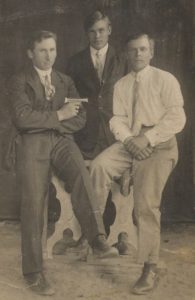
Archives are generally at the regional or state level, and can have entire family collections, which often come in boxes filled with letters, photos, notes, random documents, business receipts, journals, and more. A lovely place to hide a letter from a woman secretly serving as a Civil War soldier; a diary written by a midwife who helped birth the illegitimate child of a rich great, great grandfather; or a whimsical family tale about the crazy great aunt who disappeared with the neighbor boy and was never heard of again. A lot of this stuff can’t be found anywhere but in archives.
County courthouses are the best and worst places for genealogists. Records might be decades, or even hundreds, of years past. They can include lawsuits, guardianship records, land disputes, wills and probates, stuff about businesses, government employees, clubs…if you need to hide a fake government record, hide it in a courthouse.
Some county records have been photographed and digitized, and voila! Internet bliss. However, most of these documents have not, which means you have to go to the courthouse, pray hard that you don’t have some irritating public employee that won’t let you see anything, and then spend hours culling through thousands of dusty documents that haven’t seen the light of day since they were created. This is a treasure hunt for the history geek, and horror for internet junkies.
In a courthouse you might find your fake family’s handwritten will that explains why the youngest son was cut out of an inheritance; a deed that shows the borders of family land that a corporation is claiming isn’t your modern day family’s; the marriage license that was never used. Believe me, these are rarely on the internet when they’re real, and you will work to find them.
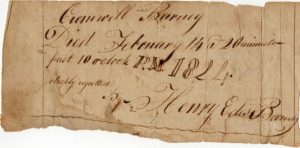
For a fake family, though, this research effort can be as easy or hard as you want it. Personally, I prefer a small town courthouse over a major urban courthouse. I mean, if your villain – or sleuth – needs to quietly fold up a document and stuff it in her purse, you certainly aren’t doing that in New York City.
But when it comes to specific family details, there is one place the internet hasn’t touched at all: your fake grandparents’ attic. I’m speaking broadly here, as my own grandmother threw out journals she’d kept for decades because they were “boring.” Might as well have thrown out her marriage certificate! (Which, fortunately, she gave to me long before her downsizing effort.)
Imagine a family home that has been handed down from generation to generation, imagine then what – and where – you can hide stuff in that house. It might be photos in a box tucked in the corner of the attic; a rusty gun hidden under the floor boards; a lost letter hidden in the pages of the family Bible; or even your grandmother’s journals packed in a box in the back of the closet.
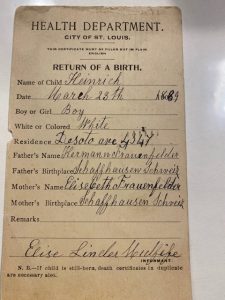
If, like me, your hero has moved so often he doesn’t actually claim a hometown, that’s okay. There are storage sheds, people who bought the family home, and estate sales and eBay where unloved family artifacts might end up.
Sure, the internet is a great place for big stuff like the census. However, I hide the history of my fake families in the flotsam of day-to-day life, the stuff that we all create every day and think has no value.
That way, when I poison my protagonist’s dentist after a feud with his twice-removed first cousin, my sleuth can find out which of their ancestral grandfathers killed the other – thus causing a chain of bitter distrust across generations – through the writer’s license to make up stuff and pass it off as fact.
[Notice: No actual family members are murdered in creating my fake family trees.]
About the author: Andree Swanson, who sometimes goes by AJ Brower when she’s pretending to be a writer, is the Public Information Officer of the Drug Enforcement Administration St. Louis Division. She took the position in December 2019. Prior to that, she was the onsite operations contract manager for an Air Force mapping program. She retired from the Air Force Reserve in 2013, where she spent 28 years as a public affairs officer.


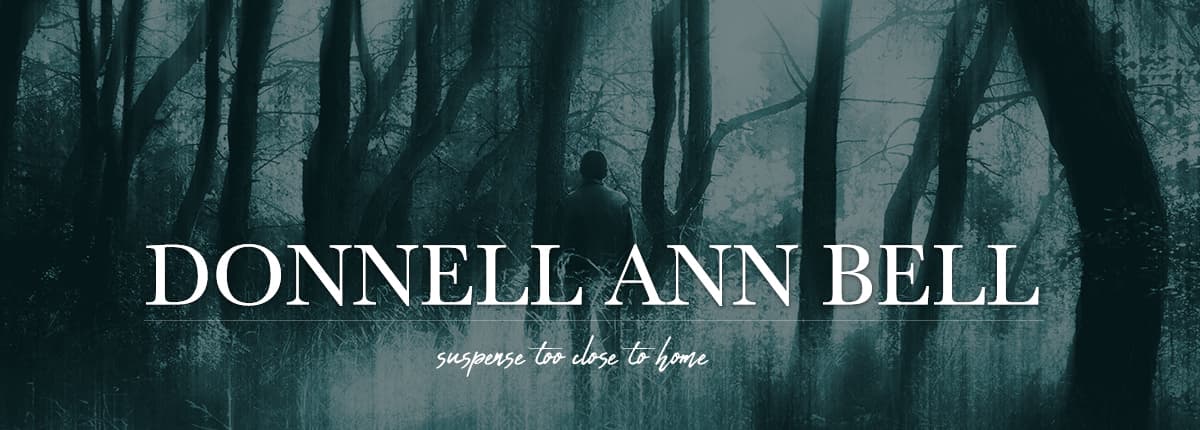
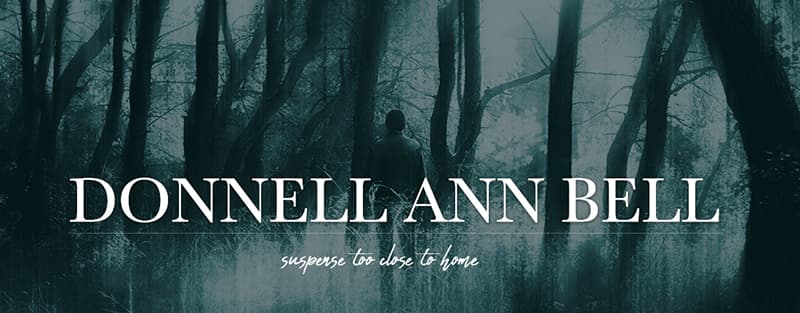







How well I remember that microfilm reader! I spent hours staring through it in the top floor of our library. Great information in your post.
Hi, Patricia! And wasn’t it ADDICTING? Research on the internet is just so…easy. Takes away the challenge of solving the puzzle. I think that’s why I like creating mysteries with hidden evidence in dusty courthouses. That’s a challenge!
Loved Microfiche. Probably a precursor to Google, right? Thanks so much Andree, this has given me all sorts of evil ideas for my fiction.
Always glad to be part of your friends, Donnell! Equally happy that I can provide hints for criminal activities.
I got hooked on microfilm at our public library. I used to look at back issues of my hometown newspaper.
Last year, I went back to my birthplace and spent several hours looking through the deed book at the county courthouse. If anyone wants to commit murder or do serious damage, dropping a volume of a deed book on someone would make a good weapon. :-). I was looking for the history of the first house I ever lived in, which has now been torn down and replaced by a tangle of ivy and kudzu vines. I discovered that 1. My grandfather died without a will, 2. My mother needed to swear out an affidavit that yes, my grandmother did own the house, 3. The date on that affidavit was June, 1968, several years after my grandfather died; 4. We moved to a different state in 1968, so I will bet you almost anything they had to prove ownership of the house in order to sell it; 5. The date on the affidavit is either the day of or just a very few days after Bobby Kennedy was shot and died. So I can imagine that may have been a topic of conversation between my mother and the people in the law office. (I was four so I don’t remember all of that. My sister was seven going on eight and may have a better memory.)
Love this, you were practically in a time capsule!
I spent many years in musty courthouse vaults searching marriage licenses, properties, and wills. I cranked the handles of microfiche film until my arms ached and my vision blurred. But it was worth it. I unearthed the history of ancestors and brought them to life again through genealogy that has been handed down to the present generations.
Wow. Fascinating stuff. We have some interesting family legends. One of these days when I have time….LOL…I may find out if they are true. I once did a fake family tree to establish a timeline in a book.
Thanks, Andree for a fascinating way to research. Funny story I have a picture of my daddy on Facebook. My niece, born in 1989, reached out to my half brother about the picture. Lee gave Anna all kinds of neat information on the picture. Said my dad was only 16 and in the navy. Turns out in this picture he was “shacked up” with three waitresses. Lee says rumor had it he might have been sleeping with one or all three of them. The picture was taken in the alley behind the place they lived. He said daddy was 6’2″ and in the picture, he’s wearing dungarees and a t-shirt. The thing Anna can’t seem to grasp is that he was only 10 when he started smoking. I keep trying to explain to her that it was normal for those times. I remembered being told when 7 or 8 that my daddy was in the Merchant Marines not the navy. Turns out he was in the navy and I still don’t know who told me but I can’t picture sitting in my grandmother’s living room looking at a picture on the wall that triggered the question. I just wish I knew who told me and why they lied. In the meantime I’ve just been using Ancestry.com to locate my family tree.
Lots of families seem to have mysteries in their past. My great grandfather’s obituary noted how valiantly he served in the Confederate Army during the Civil War. Well, up to a point. A look at the Roster of the 37th Tennessee Infantry shows that in February of 1864 he decided that discretion was the better part of valor and did a bunk for home. Fortunately, in my opinion. Otherwise I might not be here today.
Thanks for this topic. Fun.
Great way to look at it, Sandy 🙂